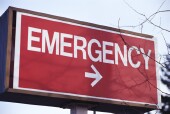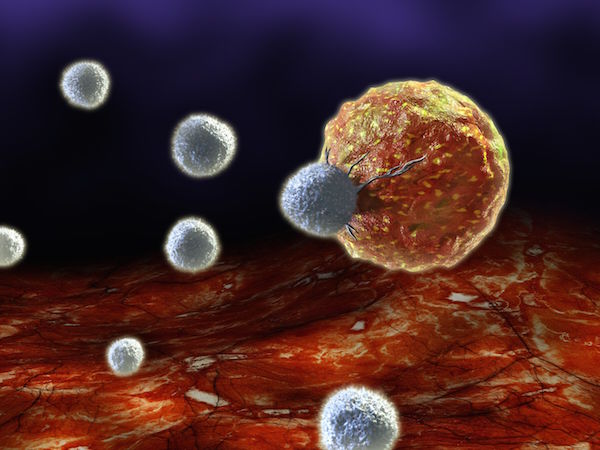
WEDNESDAY, July 25 (HealthDay News) — Using a specialized type of CT scan can help doctors rule out heart attacks faster in people who’ve come to the emergency room with chest pain, researchers say.
The average length of time in the hospital was shortened by nearly eight hours for those who received the test called coronary computed tomographic angiography (CCTA), according to the study.
But, the scan isn’t without its drawbacks as it increases the cost of care and may expose people to additional radiation.
“CCTA is a very powerful tool in terms of diagnosis and prognosis. You can look at the arteries of the heart, and very early on you know whether someone has coronary artery disease or not,” explained the study’s lead author, Dr. Udo Hoffmann, division head of cardiac imaging at Massachusetts General Hospital, and an associate professor of radiology at Harvard Medical School.
The study, which was funded by the U.S. National Heart, Lung, and Blood Institute, is published in the July 26 issue of the New England Journal of Medicine.
If a patient arrives at the emergency department with chest pain, they’re hooked up to an electrocardiogram that shows their heart rhythm. If they are in the middle of having a heart attack, the EKG shows this. But, sometimes, it isn’t conclusive. That’s why doctors also use a blood test that measures levels of a biomarker called troponin. If troponin levels are elevated, the patient likely had a heart attack.
However, not everyone with chest pain shows clear signs of heart disease from these tests. “These are the patients where physicians need to rely on their judgment. They’ve presented with symptoms and possible risk factors that can’t just be disregarded,” Hoffmann said.
At this point, physicians can admit people into the hospital to have an exercise stress test. This test may show heart disease that an EKG or a troponin test missed. A doctor can also choose to discharge a patient with instructions to follow up with their own physician and get a stress test within three days of discharge, according to Dr. Robert Glatter, an emergency physician at Lenox Hill Hospital in New York City.
“These are difficult cases. It’s these low-to-intermediate risk patients that we’re most concerned about, and a lot of doctors are hesitant to send patients home without imaging or stress testing, because you don’t want to miss a potential heart attack,” Glatter said. He added that doctors may also choose to just send patients home, because most of this group won’t have heart disease.
A more recent option is CCTA. This test uses advanced CT scanning technology combined with the use of an intravenously administered contrast material to provide doctors with detailed images of the blood vessels supplying the heart. Using this technology allows doctors to see if there is any plaque buildup in the blood vessels leading to the heart that could be limiting the supply of blood reaching the heart.
In the current study, Hoffmann and his colleagues randomly assigned 1,000 people to receive either early CCTA testing or to a standard evaluation. All participants were being seen in an emergency department for chest pain. None had EKG changes or elevated troponin levels. All were between the ages of 40 and 74, with an average age of 54. Forty-seven percent were women.
For those who had CCTA as part of their initial evaluation, the average length of their hospital stay was reduced by 7.6 hours. The study also found that more patients — 47 percent — were discharged from the emergency department compared with 12 percent of the group who received a standard evaluation.
The researchers followed up with participants from each group at 28 days and found no differences in the rate of major adverse heart events between the groups.
Not surprisingly, the CCTA group had higher radiation exposure than the standard evaluation group. The CCTA group also ended up undergoing more testing. The costs for treating the CCTA group totaled $4,289 on average, compared with $4,060 for the standard evaluation group, the findings showed.
Hoffmann said CCTA led to more testing because it helps detect more coronary artery disease than traditional tests.
He said that there’s always a concern about exposing patients to additional radiation, but that benefits of the test often outweigh the risk. Glatter added that newer techniques can reduce the amount of radiation that a patient is exposed to during the test, but that these newer techniques aren’t yet available everywhere.
Not everyone is convinced, however, that the benefits justify the risks in this patient population.
“I’m concerned about the amount of radiation, and not just from the CCTA, but a lot of times the nuclear stress test and coronary angiography that followed. For every 10 millisieverts of radiation, one in 2,000 people will get cancer, and some people in this study were getting over 10 millisieverts,” said the author of an accompanying journal editorial, Dr. Rita Redberg, director of women’s cardiovascular services at the University of California, San Francisco, and editor of the Archives of Internal Medicine.
Still, she said, if someone clearly needs the test, they should get it. But for those who are lower risk, who don’t have clear-cut signs of heart disease, she suggested talking to your doctor about the value of the test, and the risks, specific to your situation.
More information
Learn more about chest pain from the U.S. National Library of Medicine.

